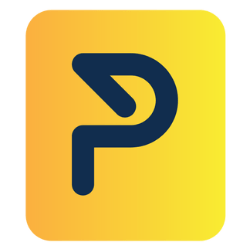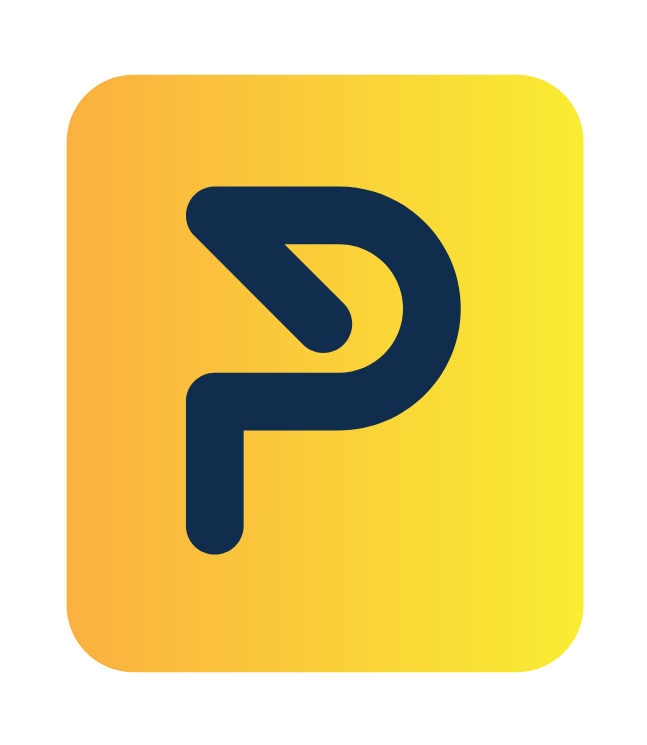Navigation
What is prompting?
Prompting is the art of harnessing general AI tools to create a reliable second brain for PreSales. It borrows what you already do well in discovery, demo design, and RFP work: clear goals, rich context, and disciplined follow-up. With the right inputs, AI stops sounding generic and starts behaving like a junior consultant who knows your buyer, your product, and your KPIs.
Why prompting matters for PreSales
Weak inputs lead to generic or incorrect answers, which is risky in regulated contexts. PreSales must communicate in a role-aware and KPI aware way across multiple stakeholders. Prompts encode role, context, format, tone, and checks, which turn AI into repeatable workflows you can trust.
- Speed with accuracy: go from blank page to usable draft for discovery guides, demo flows, and RFP sections in minutes, with checks that keep you credible in regulated environments.
- Persona fit: speak differently to CFO, COO, CIO, Compliance, and Procurement without rewriting from scratch.
- KPI focus: anchor every output to metrics that matter in supply chain and trade such as cost to serve, landed cost, duty savings, OTIF, lead time variance, demurrage, and emissions.
- Repeatability: shared prompts turn best practice into a house style your whole team can use.
A simple mental model
Think of prompting as a structured client conversation with the AI.
Discovery: state the business outcome, audience, and constraints.
Demo narrative: ask for a clear structure such as Pain, Dream, Fix with one proof metric.
Verification: request assumptions, checks, and a revised final.
Packaging: specify the artefact such as email, storyboard, matrix, or executive brief.
Anatomy of a high quality prompt
-
Role: who the AI is acting as.
-
Audience: who will consume the output and why they care.
-
Objective: the outcome and the decision it supports.
-
Inputs: short facts that ground the work such as industry, systems, volumes, constraints.
-
Format: table, bullets, email, storyboard, one pager.
-
Tone and length: friendly and direct, British English, 120 to 150 words if an email, short sections if a post.
-
KPI: the one number to emphasise for this persona.
-
Constraints: what to include or avoid such as no jargon, avoid internal codes, do not invent facts.
-
Checks: ask for assumptions, confidence, and items needing validation.
-
Next step: request two actions with owner and date so the draft moves the deal.
Before and after example
Input context
-
Industry: global apparel importer
-
Challenge: demurrage and detention rising 18 percent year on year
-
Systems: SAP ERP, CargoWise, Okta SSO
-
Stakeholders: CFO and Logistics Director
-
KPI to emphasise: demurrage reduction within 90 days
Weak prompt
“Write an email about our platform for this client.”
Result
Generic claims, no numbers, wrong tone for CFO.
Strong prompt
Act as a PreSales consultant. Audience: CFO at a global apparel importer and the Logistics Director.
Objective: secure a 30 minute working session to agree a 90 day demurrage reduction plan.
Context: SAP ERP, CargoWise, Okta SSO. Demurrage and detention up 18 percent YoY. Ports: Felixstowe, Rotterdam.
KPI: reduce demurrage within 90 days.
Format: 130 word email with subject line and a 3 bullet value summary. British English, plain language.
Constraints: avoid jargon, no product features list, tie each point to CFO value.
Checks: list 3 assumptions and 2 validation items separately; do not invent figures.
What improves
Persona fit, KPI focus, credible ask, clear next step, visible assumptions.
Common pitfalls and fast fixes
Generic outputs: add industry, volumes, systems, constraints, and a gold standard example to mimic.
Hallucinations or out of date facts: ground answers in approved text, allow insufficient data, and add a verification pass.
Persona mismatch: request three variants in one go such as CFO risk and ROI, CIO integration and security, COO throughput and adoption.
Opaque ROI math: ask for steps or simple code, include units and time frames, add a 3 bullet executive interpretation.
Over or under specification: set role, audience, format, tone, and length, then ask for 3 to 5 options to explore.
Inconsistent team quality: file prompts and examples in a central library with owners and versions.
Crafting compelling prompts
Unravel the why behind the what
Connect pains to executive goals. Ask the model to tie each recommendation to a KPI such as on time in full or duty savings.
Use real scenarios
Describe workflows, volumes, and systems so benefits are tangible. Ask for a Pain, Dream, Fix frame with one metric of proof.
Quantify the impact
Request the steps, simple code, or a calculation outline so the math is auditable, followed by a 3 bullet executive interpretation.
Bring outside proof when allowed
Where permitted, include customer quotes and case stats. If sources are required, ask the model to say insufficient data when facts are missing.
Ensure clarity
Pick a channel: email, slide, table, one pager. Specify style, tone, and length. Make it accessible to technical and executive readers alike.
Best practices for promting
Start with the 4Cs: Context, Customer role, Constraints, Custody of output format and tone.
Target the persona and a KPI: for example, CFO plus working capital, Compliance plus penalties avoided.
Request a brief outline first, then expand it after alignment.
Provide a gold standard example to mimic for tone and structure.
Request 3 to 5 options, each tied to a different executive benefit such as cost, risk, speed, sustainability.
Make the math auditable by asking for steps or simple code plus a 3 bullet executive interpretation.
Add a quick verification pass: draft, three checks, revised final with assumptions listed.
Chain the workflow: discovery to demo story to ROI to executive brief.
Keep a human in the loop for anything regulatory, security, or financial.
Pick the right tool for the job: Perplexity for current facts and sources, ChatGPT or Copilot for drafting and dialogue, Claude for long documents and structured plans.
Tools to use
Perplexity: current facts and cited sources for regulated or time sensitive topics.
ChatGPT or Copilot: fast drafting, dialogue, and iteration with clear roles and constraints.
Claude: long documents and structured plans where context length and stepwise output help.
ChatGPT Prompt Master
What the GPT Can Do for You
1. Improve Any Prompt
Make your AI prompts clearer, more specific, and tailored to your use case (e.g., discovery, demos, objection handling, ROI).
2. Build Reusable Prompt Templates
Help you create and structure prompts that can be reused across your team, with guidance on audience, tone, format, and role alignment.
3. Match the Right Technique to Your Goal
I can apply advanced techniques from your AI Guidebook (e.g., Role Prompting, Framework-Driven, Step-by-Step, Self-Consistency) to ensure higher-quality output.
4. Turn Tasks into Prompts
Give me your task (e.g., “prepare a compliance demo for a logistics manager”), and I’ll turn it into a fully optimised prompt with optional variations.
5. Suggest Prompt Frameworks
Recommend the best frameworks (such as SPICED, MEDDICC, or RISEN) to structure your questions, messaging, or analysis.
6. Review and Refine Existing Prompts
I can critique a prompt you already have and provide a better version, including reasoning and improvement steps.
ChatGPT PreSales Handbook
The GPT provide end-to-end support across the PreSales lifecycle, including:
-
Discovery: Sales, Functional & Technical, and Services Discovery using structured templates like the FTD and OSD.
-
Qualification: Using BANT, CHAMP, and MEDDIC frameworks.
-
Demo Excellence: Help you prepare, execute, and follow up using the Master Demo Deck and Cheat Sheet Demo.
-
ROI & POC: Guide you through ROI calculation, value selling, and Proof of Concept planning and execution.
-
RFX Strategy: Support with RFP/RFI responses and qualification to decide when to pursue or walk away.
-
Competitive Positioning: Help you stand out with storytelling, objection handling, and buyer journey engagement.
AI Guidebook for PreSales
Presales teams in Supply Chain and Global Trade operate at the crossroads of complex operations, strict regulations, and diverse stakeholder expectations. You interact with buyers from many roles such as COO, CFO, Head of Logistics, Trade Compliance Officer, IT Security, and Procurement. At the same time, you need to defend your solution design under scrutiny and show value through measurable metrics: cost to serve, landed cost, duty savings, on-time in-full delivery, lead-time variance, demurrage, and emissions reduction.
Prompting means giving clear and structured instructions to AI tools like ChatGPT. It can dramatically improve the speed, quality, and consistency of your presales work. It helps with sharper discovery questions, stronger demo flows, faster RFP responses, more credible ROI models, and better objection handling.
This guide distills both foundational and advanced prompting techniques into practical templates tailored for Supply Chain and Global Trade. The goal is to make AI your dependable “second brain” while avoiding the trap of generic outputs.
You’ll find:
- An overview of the tools available and what they are best suited for
- How to use AI tools effectively in presales
- A short primer on why prompting matters in presales
- 41 techniques, grouped into Foundational, Reasoning and Exploration, Verification and Safety, Workflow and Automation, and Multi-Perspective and Creativity
- For each technique: what it is, why it helps, when to use it, common pitfalls, a reusable template, and domain-specific examples
- End-to-end playbooks for discovery, demo design, ROI analysis, architecture and security reviews, RFP strategy, and objection handling
If you’re looking for a quick option and prefer not to read this lengthy document, please use the ready-made Prompt Master, which contains all the best prompting techniques.
ChatGPT Prompt Master (https://chatgpt.com/g/g-67c4a0acccb48191adbba664a1b24c8a-prompt-master)
PreSales perspective
Structured prompting is not a shortcut. It is a discipline and your operating system for discovery, demos, ROI work, and RFPs. Start early, qualify hard, and encode role, context, KPI, constraints, and output format in every brief. Use AI for speed where it helps most such as drafting, synthesis, and exploring options. Keep a human in the loop for judgement calls, compliance, pricing, and final sign off. Treat verification and versioning as standard practice so you gain speed without trading away accuracy or trust.
So what for PreSales perspective
-
Win time where it matters
Move from blank page to usable drafts for discovery guides, demo storyboards, and RFP sections in minutes, then spend saved time on client conversations. -
Raise executive credibility
Produce persona specific, KPI anchored outputs that you can defend in front of CFO, COO, CIO, Compliance, and Procurement. -
Tell clearer stories
Turn pains into Proof plus Next step with one metric that carries from discovery to demo to decision. -
Make the maths auditable
Request steps or simple code and add a three bullet executive interpretation so ROI stands up under scrutiny. -
Reduce compliance risk
Ground claims in approved sources, require assumptions and confidence, and allow insufficient data when facts are missing. -
Scale consistency across the team
Reuse shared prompt patterns and templates so every asset reflects a repeatable house style. -
Improve qualification and focus
Use assumptions first and trade off prompts to decide where to invest effort, and where to politely no bid. -
Link work to hard KPIs
Tie outputs to cost to serve, landed cost, duty savings, on time in full, lead time variance, demurrage, and emissions so progress is measurable.


